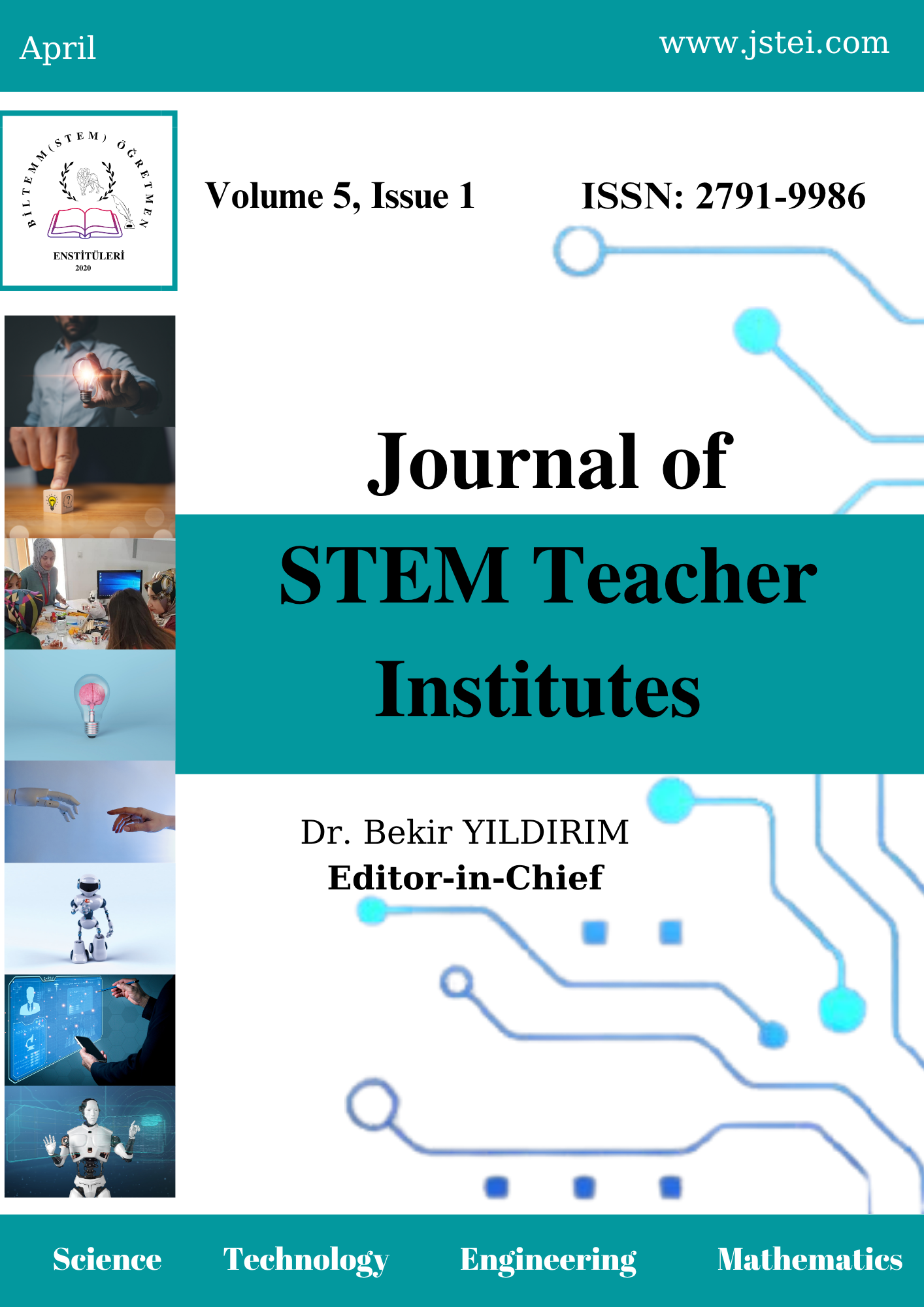Teacher Candidates’ Metaphorical Perceptions of ChatGPT
Teacher Candidates’ Metaphorical Perceptions of ChatGPT
Keywords:
ChatGPT, Teacher Candidates, Metaphor Analysis, Artificial Intelligence, Educational TechnologiesAbstract
This study aims to explore teacher candidates’ metaphorical perceptions of ChatGPT, a language model based on artificial intelligence, by examining the attitudes, expectations, and concerns they hold toward this emerging technology in a comprehensive manner. Adopting a phenomenological approach from the qualitative research tradition, the study included 220 senior-year teacher candidates enrolled in a Faculty of Education at a university. As the data collection tool, a Metaphor Generation Form was developed, prompting participants to complete the statement “ChatGPT is like … because …,” followed by open-ended questions about why they chose these metaphors. Results of the content analysis reveal that participants most frequently characterize ChatGPT positively through metaphors such as a “Knowledge Repository” and an “Assistant/Guide.” Conversely, metaphors like “Black Box/Unfathomable Power” highlight concerns regarding reliability and transparency in this technology. Furthermore, the theme of a “Magic Wand/Miracle” signifies teacher candidates’ high expectations for ChatGPT. When examining the rationale behind the metaphors, it becomes clear that, alongside positive factors like speed and variety, there are notable reservations related to ethics and academic integrity. According to a classification of positive, negative, and neutral attitudes, half of the participants view ChatGPT as beneficial and supportive, whereas roughly one-third remain skeptical or negative due to reliability and ethical issues. Demographic variables (e.g., academic department, familiarity with technology) also shape these metaphorical perceptions; notably, those with higher technological literacy adopt a more optimistic outlook on ChatGPT. These findings suggest that while teacher candidates consider both the potential benefits and ethical-technical risks of AI-based tools like ChatGPT in educational contexts, additional pedagogical and ethical frameworks are necessary for successful integration. The study underscores the importance of AI literacy in future teacher education curricula and suggests that practical coursework and ethical-awareness activities could foster a more informed and responsible stance toward AI technologies.
References
Ai, L., & Chen, X. (2023).Student achievement and motivation in AI-based educational technologies: A content analysis. Computers & Education, 197, 104667. https://doi.org/10.1016/j.compedu.2023.104667
Baker, R. S., & Yacef, K. (2009).The state of educational data mining in 2009: A review and future visions. Journal of Educational Data Mining, 1(1), 3–17. https://doi.org/10.5281/zenodo.3554657
Bender, E. M., Gebru, T., McMillan-Major, A., & Shmitchell, S. (2021). On the dangers of stochastic parrots: Can language models be too big? Proceedings of the 2021 ACM Conference on Fairness, Accountability, and Transparency, 610–623. https://doi.org/10.1145/3442188.3445922
Brown, T. B., Mann, B., Ryder, N., Subbiah, M., Kaplan, J., Dhariwal, P., … Amodei, D. (2020). Language models are few-shot learners. Advances in Neural Information Processing Systems, 33, 1877–1901. https://doi.org/10.5555/3495724.3495883
Caswell, I., & Liang, P. (2022). Issues in large-scale text generation: Bias, hallucination, and user manipulation. AI Magazine, 43(4), 12–23. https://doi.org/10.1609/aaai.2022.004
Chang, M., & Fang, Y. (2023). Teacher candidates’ perspectives on AI-driven tutoring systems: A qualitative exploration. Journal of Educational Technology & Society, 26(1), 85–96. https://doi.org/10.2307/jets.2023.011
Creswell, J. W. (2013). Qualitative inquiry and research design: Choosing among five approaches (3rd ed.). SAGE. https://doi.org/10.4135/9781849209687
Davis, F. D. (1989). Perceived usefulness, perceived ease of use, and user acceptance of information technology. MIS Quarterly, 13(3), 319–340. https://doi.org/10.2307/249008
He, J., & Chen, Y. (2023).Examining mathematics teacher candidates’ acceptance of AI-based tools for instructional design. Mathematics Education Research Journal, 35(4), 567–590. https://doi.org/10.1007/s13394-023-00412-5
Henrickson, K. (2023). ChatGPT in the classroom: Opportunities and challenges. Educational Technology & Society, 26(2), 75–89. https://doi.org/10.2307/jets.2023.027
Holstein, K., Aleven, V., & Rummel, N. (2023). Designing for collaboration between AI and teachers in the classroom: Case studies of teacher-AI orchestration. International Journal of Artificial Intelligence in Education, 33(2), 398–421. https://doi.org/10.1007/s40593-023-00312-1
Kim, M., & Lee, J. (2023). Reimagining teacher education with AI: Challenges and opportunities in pedagogical content knowledge. British Journal of Educational Technology, 54(1), 123–138. https://doi.org/10.1111/bjet.13347
Koehler, M. J., & Mishra, P. (2009). What is technological pedagogical content knowledge (TPACK)? Contemporary Issues in Technology and Teacher Education, 9(1), 60–70.https://citejournal.org/volume-9/issue-1-09/general/what-is-technological-pedagogical-content-knowledge
Lakoff, G., & Johnson, M. (1980). Metaphors we live by. The University of Chicago Press. https://doi.org/10.7208/chicago/9780226470993.001.0001
Luckin, R. (2018). Machine learning and human intelligence: The future of education for the 21st century. UCL IOE Press. https://doi.org/10.2307/j.ctv5136j4
Lu, Y., Liu, S., & Wang, Q. (2023). Investigating pre-service teachers’ intentions to use AI tools: A moderated mediation model. Computers & Education, 210, 104589.
https://doi.org/10.1016/j.compedu.2023.104589
Merriam, S. B., & Tisdell, E. J. (2016). Qualitative research: A guide to design and implementation (4th ed.). Jossey-Bass. https://doi.org/10.1002/9781119003618
Miao, Y., Zheng, D., & Xiao, Z. (2023). Ethical challenges in AI-based educational technologies: A review and future directions. Educational Technology Research and Development, 71(3), 567–590. https://doi.org/10.1007/s11423-023-10124-9
Miles, M. B., & Huberman, A. M. (1994). Qualitative data analysis: An expanded sourcebook (2nd ed.). SAGE. https://doi.org/10.4135/9781412986274
Mueller, J., & Strohm, K. (2022). Teacher education in the era of artificial intelligence: A critical analysis. Journal of Education for Teaching, 48(5), 612–626. https://doi.org/10.1080/02607476.2022.2100492
Patton, M. Q. (2002). Qualitative research & evaluation methods (3rd ed.). SAGE. https://doi.org/10.1080/09518390210140154
Russell, S. J., & Norvig, P. (2010). Artificial intelligence: A modern approach (3rd ed.). Prentice Hall. https://doi.org/10.5555/1671230
Saban, A. (2008). Okula ilişkin metaforlar. Kuram ve Uygulamada Eğitim Yönetimi, 14(1), 123–148. https://dergipark.org.tr/en/download/article-file/108283
Saban, A. (2009). Öğretmen adaylarının öğrenci kavramına ilişkin sahip olduğu metaforlar. Türk Eğitim Bilimleri Dergisi, 2(2), 131–155. https://dergipark.org.tr/en/download/article-file/256272
Selwyn, N. (2019). Should robots replace teachers?: AI and the future of education. British Journal of Educational Technology, 50(6), 2901–2918. https://doi.org/10.1111/bjet.12805
Wang, F., & Huang, Z. (2021). Factors influencing teachers’ acceptance of AI in education: An extended TAM perspective. Interactive Learning Environments, 1–14. https://doi.org/10.1080/10494820.2021.1978502
Yıldırım, A., & Şimşek, H. (2018). Sosyal bilimlerde nitel araştırma yöntemleri (11. bs.). Seçkin Yayıncılık.
Zhai, X. (2022). Exploring the role of ChatGPT in language learning: A preliminary review. Language Learning & Technology, 26(3), 45–59. https://doi.org/10.125/lt.2022.003
Downloads
Published
How to Cite
Issue
Section
License
Copyright (c) 2025 Journal of STEM Teacher Institutes

This work is licensed under a Creative Commons Attribution-NonCommercial 4.0 International License.

